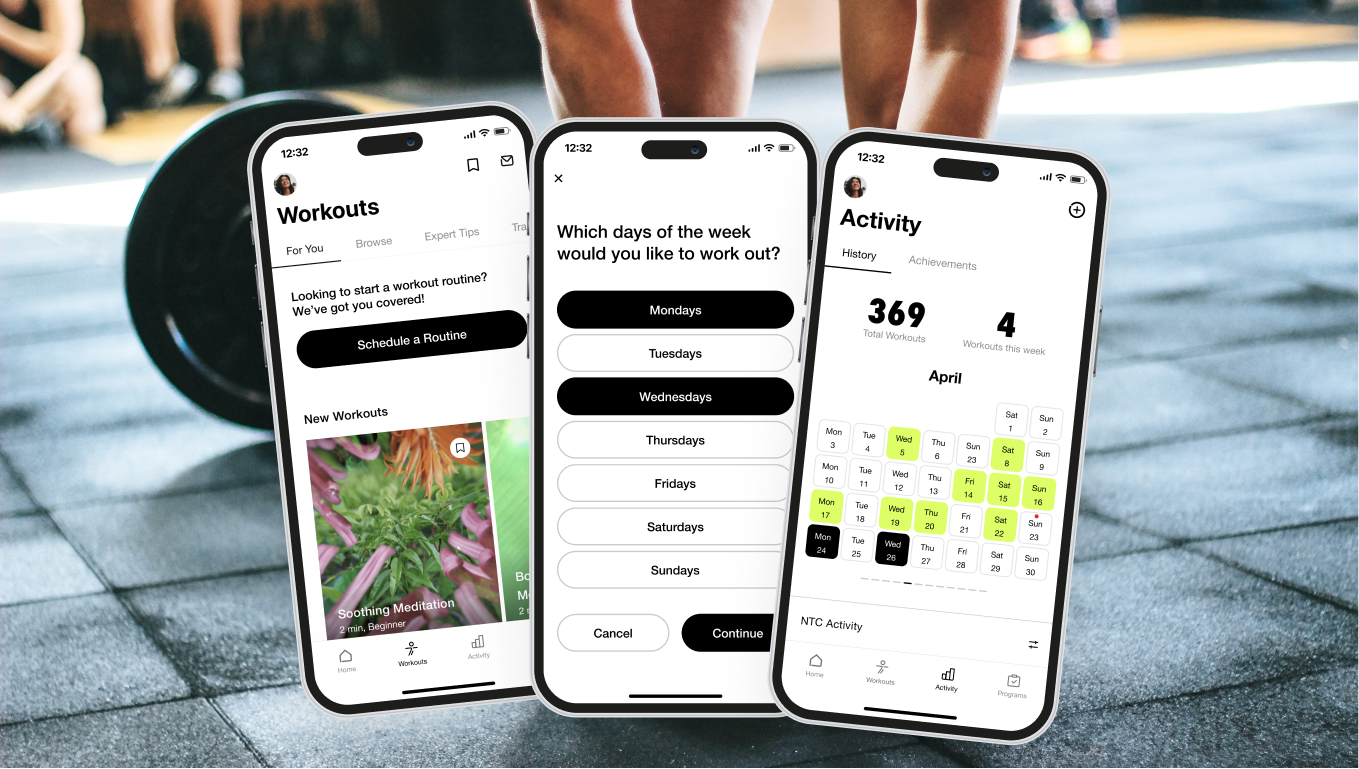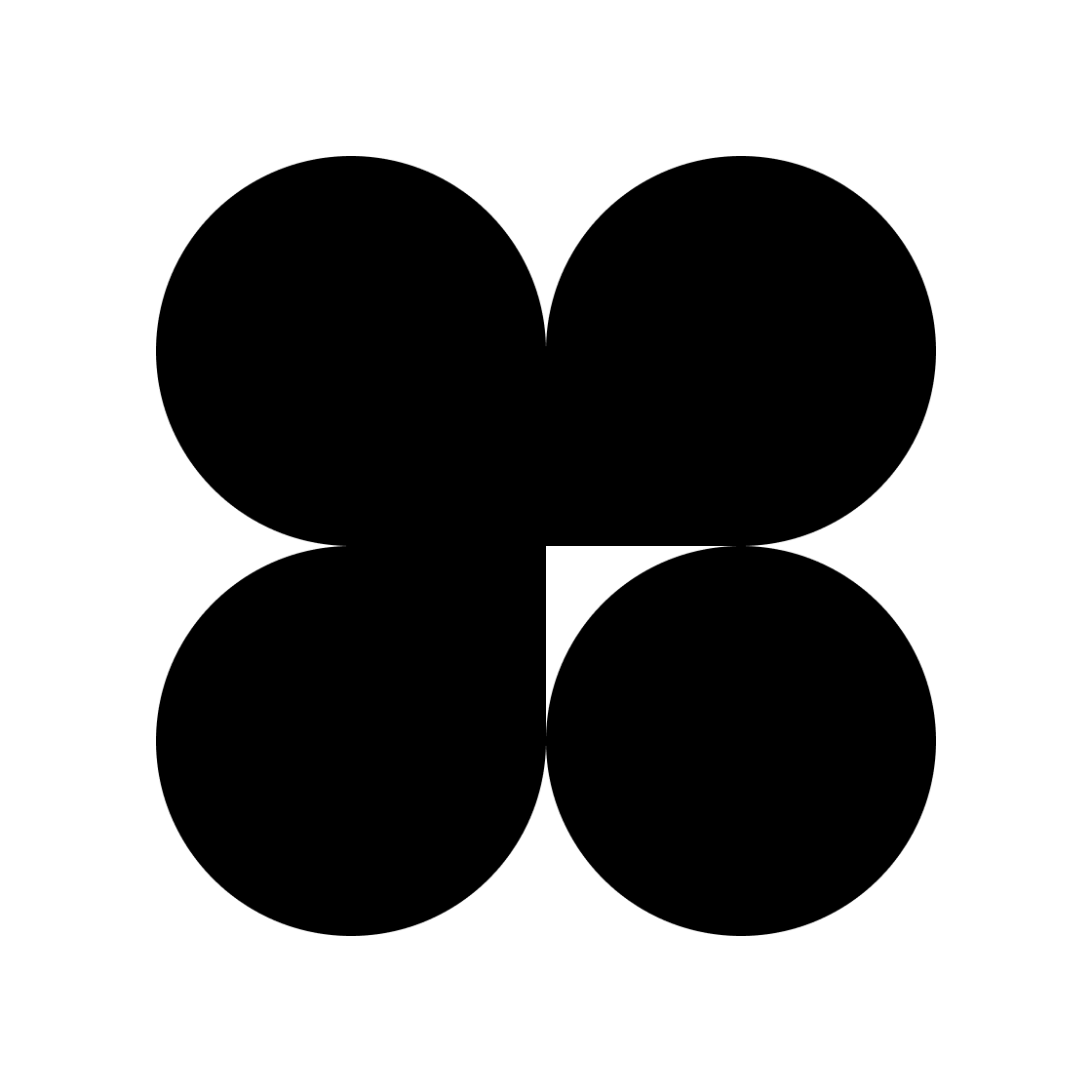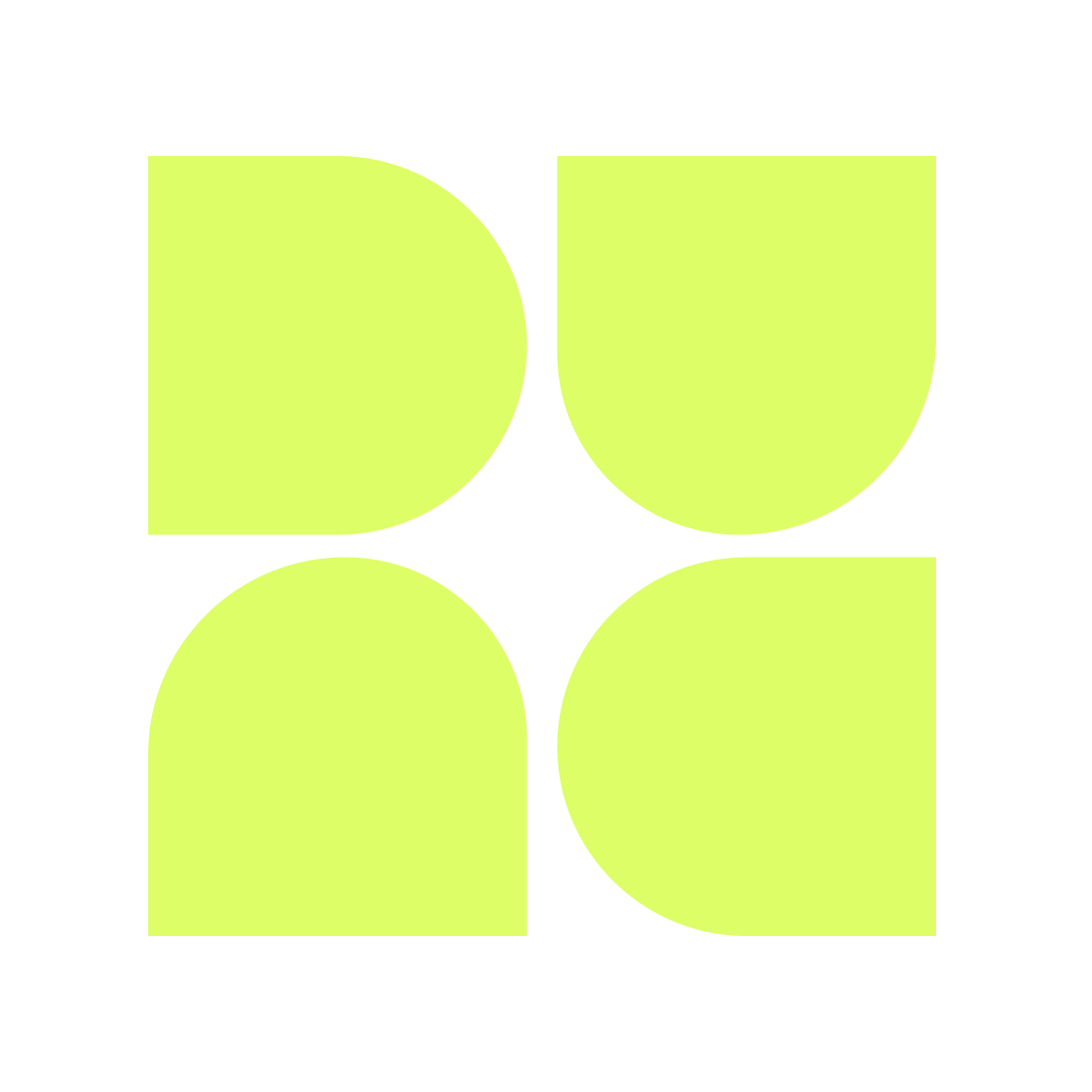
Helping Nike Training Club users better set up & track their workout routines
Overviewthe basics
what
Enhancing the functionality of Nike Training Club (NTC), a widely popular fitness app, by addressing user needs for workout guidance and progress tracking
who
I completed the end-to-end design process as part of a student project
when
April 2023
Initial Problem Investigatedhow my work on NTC began
Nike Training Club (NTC) app is a well-known fitness platform that offers users a diverse array of workouts, programs, and resources for nutrition and wellness guidance. NTC highlights that their extensive selection of programs allows individuals to progress at their own pace and on their own schedule.
However, updates to the app have caused dissatisfaction among users, particularly with the:
decreased availability of self-paced (whiteboard) workouts that include previews (now only 16% of all workouts available)
removal of personalized training plans (now converted to fixed programs)
As a result, users (particularly on app stores) have reported a decline in their overall satisfaction with the app.
Assumptions & Goalswhat I set out to accomplish
initial assumptions
Fitness app users want great control of their workouts in terms of workout previews and self-paced videos
Fitness app users seek out customization in terms of personalized training plans
high level goals
Discover challenges faced by people who use fitness apps
Understand the impact of those challenges on their fitness routine
Determine what users do to mitigate challenges
Processbut first, understanding the user
methodologies useddigging into the problem
secondary research
I began by browsing fitness app blogs and websites & the Nike Training Club app reviews to help gain insights into the fitness community and understand their concerns.
user interviews
I then surveyed 16 fitness apps users, mostly ages 25-34 to better understand user need patterns:
100% use fitness apps
80% work out multiple times a week
80% like to workout at the gym
60% prefer trainer-led workouts
competitive research
After understanding the tools that participants have used, I explored to see what features they offer and what could possibly be added or improved.
user survey insights & Revisited Assumptionswhat I quickly realized
assumptions - revisited
✖️ Fitness app users want great control of their workouts in terms of workout previews and self-paced videos.
56% of survey participants prefer trainer-led videos while only 6% strictly prefer self-paced video workouts.
✖️ Fitness app users seek out customization in terms of personalized training plans.
75% of survey participants reported looked for an app’s ability to track progress while only 38% looked for an app’s personalized workout plans.
features participants look for in a fitness app
75% Ability to track progress and set goals
63% Wide variety of workouts
38% Personalized workout plans
38% Quality of instruction
user interviewsdigging deeper with user interviews
user interviews
In order to better understand results from the survey interviewed 5 fitness apps users, ages 25-30, who are interested in tracking progress & setting goals:
100% use fitness apps for guidance
100% work out multiple times a week
80% like to workout at the gym
100% work on strength training
user Interview outcomessome key themes emerged from affinity mapping
participants have goals to improve consistency & their fitness health
100% want to build consistency
100% want to build strength
60% want to improve cardio
they monitor various workout aspects, focusing on streaks and progress.
80% track their workout streak
80% track progression in strength weights
80% track muscle groups they work out
80% track changes in their bodies
60% track reps/sets
they are motivated by a variety of factors, including tracking progress
100% are motivated by seeing progress in their physical abilities
80% are motivated by a calendar streaks
60% are motivated by class instructor encouragement
60% are motivated by push notifications
60% are social competition/recognition
they have some core needs and desires, particularly having a routine & guidance
100% reported the need for setting a workout routine to ensure consistency
100% reported the need for guidance and not having to think too much
60% desire a better way to track their strength training workouts
“Tracking progress is something that I wanna get better at because I feel like when I don’t track my progress, I just give up. Cause I don’t feel like anything is changing just cause I don’t see it but if maybe if there’s a way I can more easily track those things and just have a better idea of like what I should be tracking, I think it’ll be helpful for me to stay consistent.”
Processidentifying actual user needs
User personasmeet Amira
Based on research and insights, a persona emerged: Amira, a busy fitness enthusiast looking for workout consistency.
the Actual problemreframing the problem
point-of-view
Nike Training Club users need a way to better track their workouts so they can be motivated to consistently work on their fitness.
how might we...
help Nike Training Club users better track their workouts so they can be motivated to consistently work on their fitness?
Processbrainstorming solutions
ideationfinding ideas
divergent ideas
When ideating, I used two approaches: creative constraints & analogous inspiration in order to come up with as many ideas as possible that were both diverse yet relevant to Amira.
Prioritizingprioritizing user needs
To maximize the impact within the allocated time, I listed out features and prioritized them in terms of impact x effort.

Processbuilding a representation
Information architecture & Task flowsnavigating Nike Training Club
application mapping
I started off by building an application map to understand NTC’s existing information architecture and understand where the new features could live.
task flows
I also built task flows in order to better predict the user path and to set up a roadmap for designs.
Wireframes& setting up a framework
Using the insights from Amira, I created low-fi wireframes to represent the solution and refine any unclear aspects before testing.
..while connecting the dots
To keep design decisions focused on Amira’s goals, needs, and motivations, I made sure to tie them back to my user interview findings.
creating a calendar that allows users to visualize their activity
Fitness app users place a high value on consistency in their workouts and calendar streaks usually help them stay accountable. This new feature:
Has a calendar that displays completed workouts, whether they were done within or outside the app
Shows when a scheduled workout is coming up so that users are able to keep track of their schedule
Places scheduled workouts in a convenient location, eliminating the need for users to search for it within the NTC app
guiding users to start a routine that fits their needs
Fitness app users have expressed the importance of establishing a workout routine to maintain consistency. Additionally, they rely on fitness apps for guidance to simplify their workout experience. This new feature:
Enables users to set up a workout routine that is tailored not only to their schedule but also to their specific needs
Allows users to modify their schedule whenever necessary
Help users stay accountable with timed reminders, ensuring they don't miss a workout session
helping more accurately track the activity they complete outside the NTC app
Fitness enthusiasts typically engage in various types of workouts and monitor their strength levels. This new feature:
Adds to the NTC activity feature by allowing users the ability to provide more detailed information on their completed activities, including specific details such as arm weight training
Allows users to enter key tracking information on activities such as weight training, which serves as a reference not only for their workout routine but also their overall fitness progress
Component Libraryabiding by the Nike Training Club style
Without having direct access to the NTC style, I replicated the best I could based on their current app. I leaned on their electric yellow/green to add a pop of color to the calendar and draw user attention to their workout streak.
Hi-fi Frames & Prototypingbringing the new features to life
After adding all of the NTC to the wireframes, they were ready to be tested with participants to ensure usability.

Processtesting it out
Testingseeing what users think
In order to understand the effectiveness of the new features, I set up unmoderated usability testing with Maze with 12 participants who currently use a fitness app and have an interest in tracking their progress and setting goals
Participants were instructed to undergo 3 task flows:
task1: Set up a workout routine schedule
task 2: Start a workout on schedule
task 3: Add an activity completed outside of the app
Feedback was collected on Completion Rate and user satisfaction using a Likert scale.
Resultsparticipants enjoyed the new features - here’s what they had to say:
Results - continuedhowever, some things didn’t go as expected
task 1: setting up a workout routine schedule
Completion: 75%
Likert Measure: How hard or easy was that? 1 (Very Hard) to 5 (Very Easy): Average: 2.9
Main Usability Issue: Users did not expect to start the flow where it did
task 2: starting a workout on schedule
Completion: 100%
Likert Measure: How hard or easy was that? 1 (Very Hard) to 5 (Very Easy): Average: 5
Main Usability Issue: No issue. This task went smoothly.
task 3: adding an activity completed outside of the app
Completion: 91%
Likert Measure: How hard or easy was that? 1 (Very Hard) to 5 (Very Easy): Average: 2.7
Main Usability Issue: Users did not expect to start the flow where it did
Iterationsanalyzing changes needed
Based on user feedback, I knew that the main issue with my features lay within the information architecture. My two least successful screens were users trying to start Tasks 1 + 3.
iteration needed: rethink information architecture & start of Task 1 - essential to the feature
For Task 1, the main usability struggle that participants faced was understanding where the flow began. I has originally imaged scheduling a workout routine next to the schedule (located in the activities tab). However, participants reported expecting to see it under the “workouts”.
I re-routed the task to begin the the workouts section
iteration needed: rethink information architecture & start of Task 3 - essential to the feature
For Task 3, the main usability struggle that participants faced was understanding where the flow began. They mentioned how the “add” button was too small and easily missed and they also tried clicking on the actual calendar to add an activity.
I enlarged the “add” button and redesigned it to appear larger
I also added an “add activity” button to the schedule since it felt more intuitive to users
Processdelivering the product
introducing the new NTC workout tracking features

check out the prototype
TAKEAWAYS
some lessons learned
what i enjoyed
The Nike Training Club design system really matches my aesthetic and it was fun to recreate some of the elements such as the icons
Finding a new way to investigate a user need since I had to constrain myself to an existing product
what i learned
Working on a product without having a full download on business goals and a product roadmap is really challenging
Conducting unmoderated usability testing can be a great way to gather quick and plentiful user feedback but can also limit the depth of feedback received
what was challenging
As I did not work with the Nike Training Club team for this project, I was unable to access business goals, the product roadmap, and even the design system. There were assumptions that I had to make based on publicly available information and my own user research
Apart from receiving feedback from my mentor, I tackled the design of this project as a one-person team
An 80-hour design brief was challenging for the task at hand
what i’d do differently
With more time, I’d conduct more thorough information architecture testing such as card sorting or tree testing to understand where users would place new features
I’d quickly retest Tasks 1 + 3 be to see if the flows are more intuitive to users. If I saw user confusion early on, I’d do more interviews to get deeper insights




















